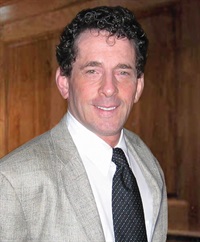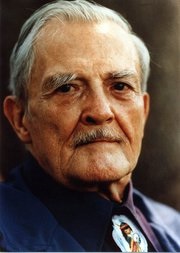Information
Milton Erickson, MD en Psicoterapia Multicultural Estratégica
Original Program Date :
Descripción:
Milton Erickson a menudo aconsejaba a los estudiantes de psicoterapia que estudiaran antropología para que la terapia pudiera proporcionarse desde la perspectiva del trasfondo cultural del cliente. En el video, Erickson usa su comprensión de la orientación cultural cuando trabaja con un adolescente donde el problema que se presenta es un defecto del habla. Este es un caso muy informativo del uso de procesos estratégicos y sistémicos que se pueden aplicar a otros problemas presentes.
El caso involucra a un niño de 16 años cuyo habla era difícil de comprender debido a su tartamudeo. Erickson reconoció que no se trataba de un problema del habla por el que se necesitarían los servicios de un logopeda. Más bien, el tartamudeo del niño reflejaba las expectativas familiares y las presiones que se le imponían, que se basaban en su herencia del Medio Oriente, y luego se trasladaron a su vida en los Estados Unidos. El uso de Erickson de la comprensión cultural y los métodos de utilización resultó exitoso en la eliminación de los síntomas.
Jeffrey Zeig, PhD

Jeffrey K. Zeig, PhD, is the Founder and Director of the Milton H. Erickson Foundation and is president of Zeig, Tucker & Theisen, Inc., publishers in the behavioral sciences. He has edited, co-edited, authored or coauthored more than 20 books on psychotherapy that appear in twelve foreign languages. Dr. Zeig is a psychologist and marriage and family therapist in private practice in Phoenix, Arizona.
Milton H. Erickson, MD

Milton H. Erickson, MD, was an American psychiatrist who specialized in medical hypnosis and family therapy. He was founding president of the American Society for Clinical Hypnosis and noted for his approach to the unconscious mind as creative and solution-generating.
Dr. Erickson was plagued with enormous physical handicaps for most of his life. At age 17, he contracted polio and was so severely paralyzed that doctors believed he would die. While recovering in bed, almost entirely lame and unable to speak, he became strongly aware of the significance of nonverbal communication – body language, tone of voice, and the way that these nonverbal expressions often directly contradicted the verbal ones. He also began to have “body memories” of the muscular activity of his own body. By concentrating on these memories, he slowly began to regain control of parts of his body to the point where he was eventually able to talk and use his arms again. His doctor recommended exercising his upper body only so Milton Erickson planned a 1,000 miles canoe trip to build up the strength to attend college. His adventure was challenging, and although he still did not have full use of his legs at the end, he was able to walk with a cane.
The Ericksonian approach departs from traditional hypnosis in a variety of ways. While the process of hypnosis has customarily been conceptualized as a matter of the therapist issuing standardized instructions to a passive patient, Ericksonian hypnosis stresses the importance of the interactive therapeutic relationship and purposeful engagement of the inner resources and experiential life of the subject. Dr. Erickson revolutionized the practice of hypnotherapy by coalescing numerous original concepts and patterns of communication into the field.
The novel psychotherapeutic strategies which Dr. Erickson employed in his treatment of individuals, couples, and families derived from his hypnotic orientation. Although he was known as the world’s leading hypnotherapist, Dr. Erickson used formal hypnosis in only one-fifth of his cases in clinical practice.
Dr. Erickson effected a fundamental shift in modern psychotherapy. Many elements of the Ericksonian perspective which were once considered extreme are now incorporated into the mainstream of contemporary practice.

